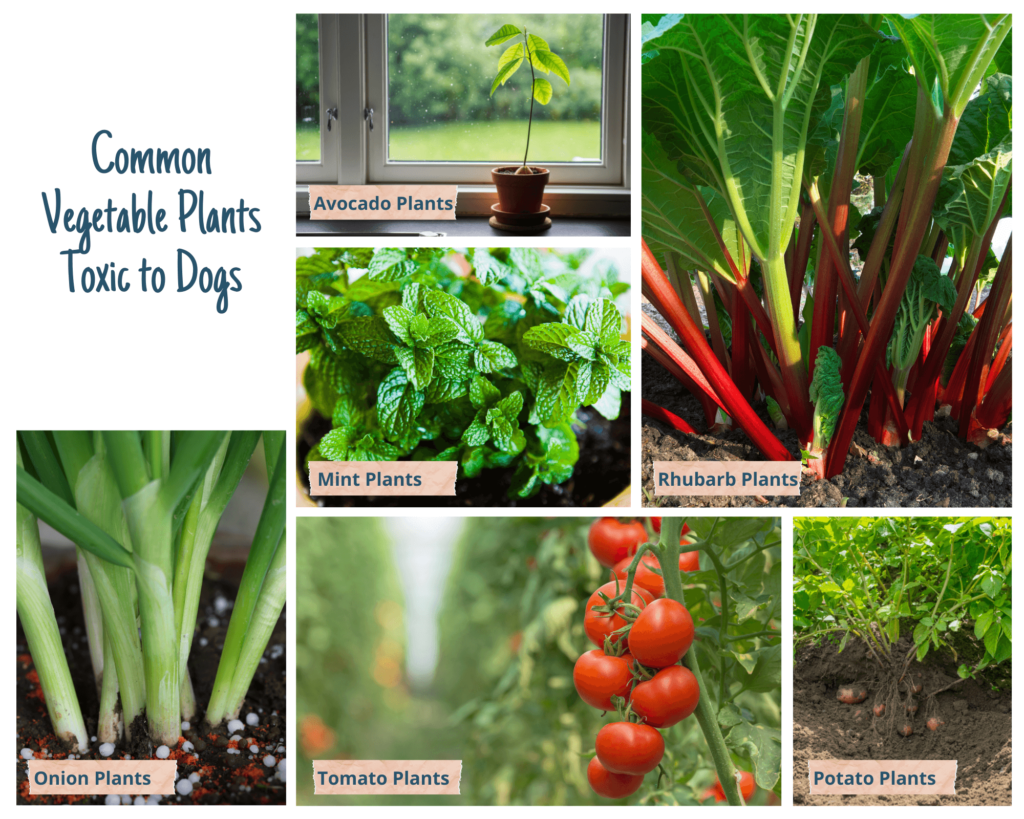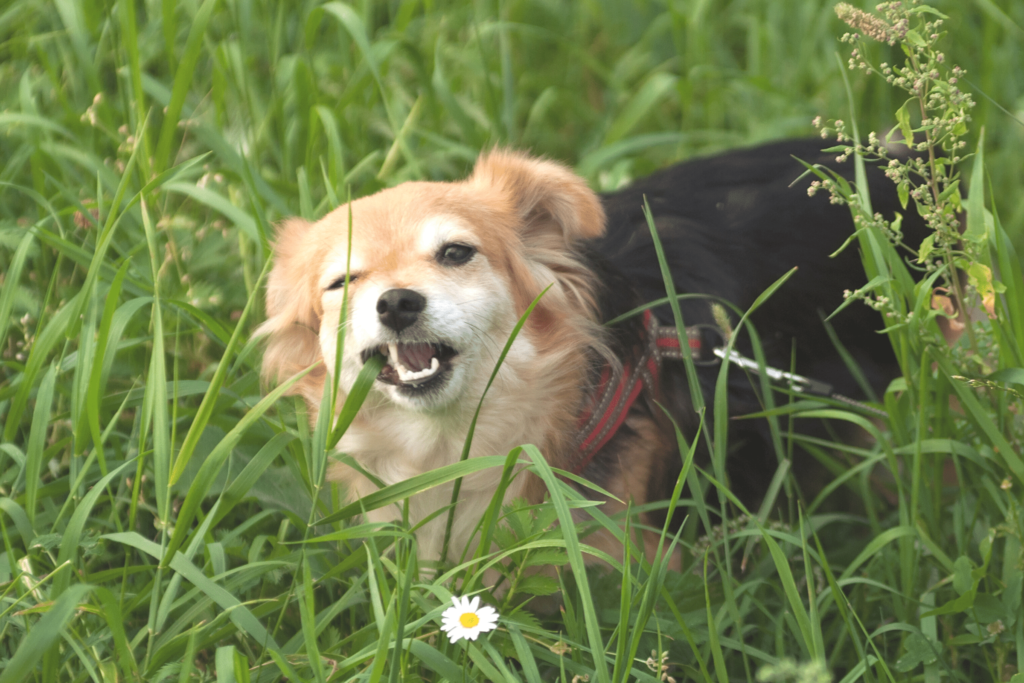There are many things a dog might be willing to taste test that could end badly, among which are plants. Toxic plants to dogs don’t always come with a disclaimer, nor are there any obvious or visual signs. Some are actually quite beautiful that it can be deceiving.

Poisonous plants to dogs can be found indoors and outdoors, and in this article, we’re going to cover a handful of both and provide some guidance to help you prevent problems between your dogs and your plants.
Some dogs can be picky eaters, but others are willing to eat whatever they can fit into their mouths, and when they do it’s often not a good thing. This is a fact when it comes to certain kinds of human food, but it’s also just as evident between dogs and plants.
The last thing an owner wants to experience is their dog suffering the negative effects of consuming poisonous plants. Depending on the severity of the toxicity of the plant, the amount that’s eaten by the dog, and the size of the dog, symptoms can range a bellyache to fatality.
Many pet parents want to know which plants are toxic to dogs, so here are some culprits you will need to give some thought to if you are considering planting them in your garden, potting them inside, or complementing your landscape.
Common Toxic Plants to Dogs (Outdoors)
Most dogs love the great outdoors. Unfortunately, there are a few areas of concern you may want to keep an eye on when either letting your dog out to roam the yard or even just to go potty. Here are some common toxic plants for dogs that may be growing in your yard or your garden.
Vegetable Plants Poisonous to Dogs
There are many common garden vegetables toxic to dogs that it can be a bit nerve-racking for those in the know. Whereas some vegetables may be ok for dogs to eat, the plants themselves (leaves, stems, and roots) are poisonous to dogs. The worst are:
- Onion, Leek, and Chive Plants (all allium plants)
- Tomato Plants
- Mint Plants
- Potato Plants
- Avocado Plants
- Rhubarb Plants
If you already have these vegetables in your garden, not to worry! There are things you can do to keep dogs away from these plants.
Small garden fences or chicken wire arches can prevent your dog from getting into these toxic vegetables. And for future years, try raised bed or container gardening with coverings to deter your pets.

Common Outdoor Flowers Poisonous to Dogs
There’s little more satisfying than a yard adorned with beautiful flowers placed in some of your favorite spaces in the yard. Here are some flowers to be cautious of, and, perhaps, locate out of your dog’s reach due to their toxicity.

- Chrysanthemums
- Clematis
- Autumn Crocus
- Fox Gloves
- Geraniums
- Daffodils
- Lilies
- Tulips
- Gladiolus
- Hyacinth
- Narcissus
- Azaleas
- Rhododendrons
- Morning Glories
If you have any of these beauties in your yard, just be sure to keep your pup from playing or sniffing around them. Garden fencing or other forms of decorative blockading can be a happy medium if the dog persists or tends to show too much interest in your flowers.

Other Landscaping Plants Toxic to Dogs
Some of the popular plants used in landscaping are also considered toxic and deserve a mention:
- English Ivy
- Hydrangeas
- Nerium Oleanders
- Sago Palms
- Elephant Ears
- Wild Cherry
- Aloe Plants
- Peony
- American Holly
- Rose Bushes

Common Toxic Plants to Dogs (Indoor)
If you’re a plant mom or dad, you likely enjoy bringing the outdoors inside with lush greenery. Even though some indoor plants are toxic to dogs, that doesn’t mean you will have to reduce the number of plants in your home or alter what plants you adopt.
Depending on the plant, there are more preventative options available to keep dogs away from harmful, toxic plants. You can simply place the planters on higher shelves, hanging from the ceiling, or move plants you know are toxic to dogs into rooms that are off limits.
Below is a list of some beautiful indoor plants you’re better off keeping out of your dog’s reach.
- Golden Pothos Plant
- Jade Plant
- Dieffenbachia Plant
- Arrowhead Plant
- Eucalyptus Plant
- Dumb Cane Plant
- Begonia Plant
- ZZ Plant
- Alocasia Plant
- Strelitzia Plant
- Dracaena Fragrans Plant
- Chinese Evergreen Plant
- Philodendron
- Asparagus Fern
- Ficus Benjamina

Toxic houseplants for pets can be easily kept out of their reach, but some pet parents may feel more comfortable not bringing them into the home they share with their dog altogether.
This sums up the most common list of plants that are toxic to dogs. For the full list of poisonous plants that negatively affect dogs, including their toxic principles and clinical signs, head over to the ASPCA website.
Is Grass Safe for my Dog to Eat?
Since we’re talking about dogs and plants, why not talk about the most popular plant out there? Grass.
Some dogs eat grass because to them, it’s a tasty change from their regular diet. Others might decide to gnaw on the lawn because they’re just bored.

In some cases, dogs will decide to eat grass because their body is craving roughage that its system may be lacking. In this case, it’s an instinctual behavior.
The grass itself is perfectly healthy for a dog to consume. The only danger that you may want to be wary of is grass treated with chemicals.
If your dog has developed this behavior suddenly, then a trip to the vet might be beneficial just to be safe.
Signs and Symptoms of Toxicity
Depending on what kind of plant your dog has ingested, symptoms can range from mild to downright scary. Look for obvious signs like vomiting, diarrhea, or shaking, and other serious symptoms such as lack of coordination (wobbly or off balance), hacking/coughing, dilated pupils, sneezing, weakness, trouble breathing, or seizures.
You know your dog(s) better than anyone. If they’re displaying unusual behavior that just doesn’t fit with their everyday demeanors, that could be a sign as well.
If you notice any of these symptoms or suspect your dog has eaten a toxic plant, please call your veterinarian immediately.
Tips for Avoiding Poisonous Plants to Dogs
Need a quick reference guide when out shopping for plants?
In comes the ASPCA.
The ASPCA has set up a great resource called the “Toxic and Non-Toxic Plant List- Dogs.” This list will give you an exhaustive list of the plants that are safe to purchase as well as those to avoid, to keep things safe for your pup.
If you’d like to check it out or keep the list on hand for the next time you’re checking out new plant babies, you can do so in the ASPCA’s Animal Poison Control section.
Conclusion
We don’t work the same internally as dogs do, and vice versa. They can eat things that we’d never consider putting near our faces, and we can eat things that could ultimately kill them.
Well-intentioned yet ill-informed pet parents have experienced real-life horror stories from feeding human food (they assumed would be fine) to their dogs, with tragic results. Not understanding what plants can be toxic to our pets can be just as dangerous.
But there is good news for dog lovers who also wear a plant parent hat! For every plant on the list that is toxic to dogs, there are alternatives that do not contain the chemicals that deem them dangerous. The list of safe plants for dogs is extensive!
Now that you know which plants are toxic for dogs, is it more work than you’d normally have to go through when selecting a plant for, say, a coffee table? Yes, sure it is.
Is it worth it?
Well, just ask your dog. 😊
What are some clever ways you keep vegetables, flowers, and other plants away from your dogs? I’d love to read about them in the comments!
